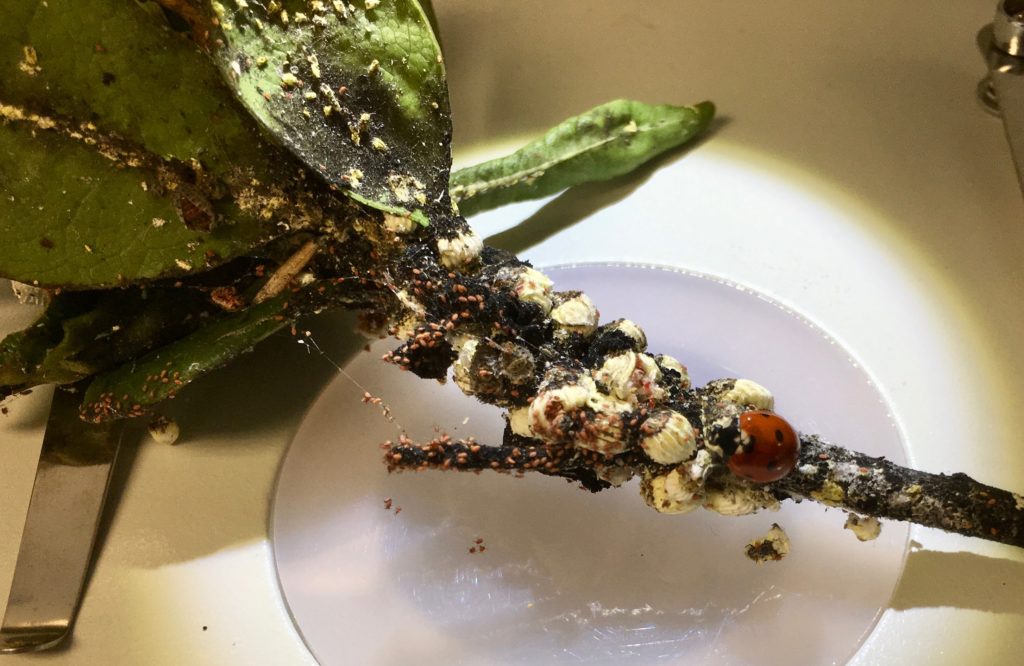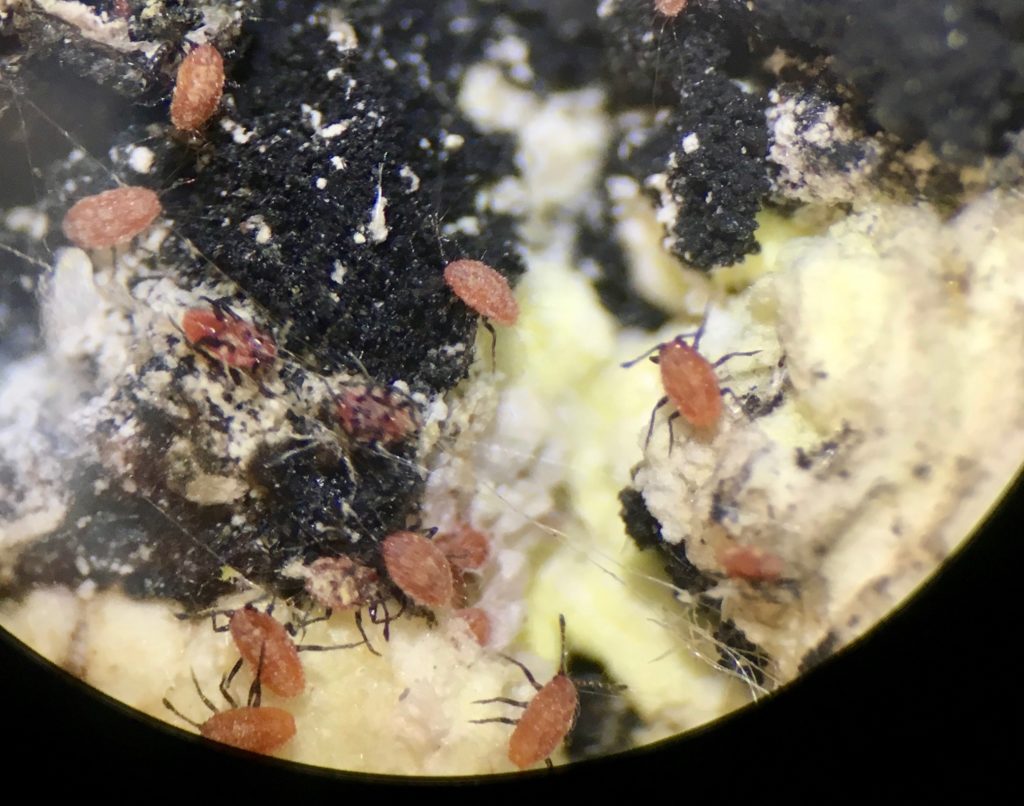Cottony Cushion Scale on the Move
go.ncsu.edu/readext?600190
en Español / em Português
El inglés es el idioma de control de esta página. En la medida en que haya algún conflicto entre la traducción al inglés y la traducción, el inglés prevalece.
Al hacer clic en el enlace de traducción se activa un servicio de traducción gratuito para convertir la página al español. Al igual que con cualquier traducción por Internet, la conversión no es sensible al contexto y puede que no traduzca el texto en su significado original. NC State Extension no garantiza la exactitud del texto traducido. Por favor, tenga en cuenta que algunas aplicaciones y/o servicios pueden no funcionar como se espera cuando se traducen.
Português
Inglês é o idioma de controle desta página. Na medida que haja algum conflito entre o texto original em Inglês e a tradução, o Inglês prevalece.
Ao clicar no link de tradução, um serviço gratuito de tradução será ativado para converter a página para o Português. Como em qualquer tradução pela internet, a conversão não é sensivel ao contexto e pode não ocorrer a tradução para o significado orginal. O serviço de Extensão da Carolina do Norte (NC State Extension) não garante a exatidão do texto traduzido. Por favor, observe que algumas funções ou serviços podem não funcionar como esperado após a tradução.
English
English is the controlling language of this page. To the extent there is any conflict between the English text and the translation, English controls.
Clicking on the translation link activates a free translation service to convert the page to Spanish. As with any Internet translation, the conversion is not context-sensitive and may not translate the text to its original meaning. NC State Extension does not guarantee the accuracy of the translated text. Please note that some applications and/or services may not function as expected when translated.
Collapse ▲
Cottony Cushion Scale Insect
A sample of Pittosporum was brought into the office to have an obvious issue identified. I say obvious because there was definitely something that wasn’t right with the plant. What was causing the problem may not have been so obvious. In this case, the problem was an insect that looks like a white growth on the stem of the plant. The insect is Cottony Cushion Scale.
Scale insects of all types have piercing-sucking mouthparts. Once they find a comfortable place on the leaf or stem they settle in, use their mouthparts to pierce the epidermis and penetrate into a cell where they begin sucking the juices out of the plant. Scale insects feed slowly enough that they don’t kill the cell, which allows more plant juices to flow into the cell creating a continuous supply for the insect. In this case, the scale forms a soft, white shell over the insect and never again has to move from that spot as it continues to grow and develop.

Cottony Cushion Scale Crawlers
In this case, the sample not only had the adult Cottony Cushion Scale insects but when looked at under a 20X hand lens or microscope it appears that the eggs have recently hatched and there are tiny little crawlers moving about searching for a place to call home. This crawler stage is the stage of the insect’s life that is most vulnerable to insecticides and can be controlled using the least toxic of chemicals in horticultural oils and insecticidal soaps. Once the crawlers settle in and start producing the waxy coating it will take more than just a contact insecticide to get through the shell. Fortunately, this scale insect is in the soft scale group that is susceptible to being controlled with systemic insecticides as well. It’s best to avoid using the systemic insecticides until after the plants have finished blooming.
For more information about this insect, there is a website from the University of Florida with some really nice pictures.




